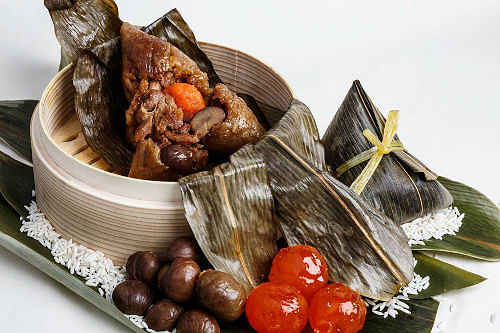Explainer: The Story Behind Dragon Boat Festival – Thatsmags.com
www.thatsmags.com
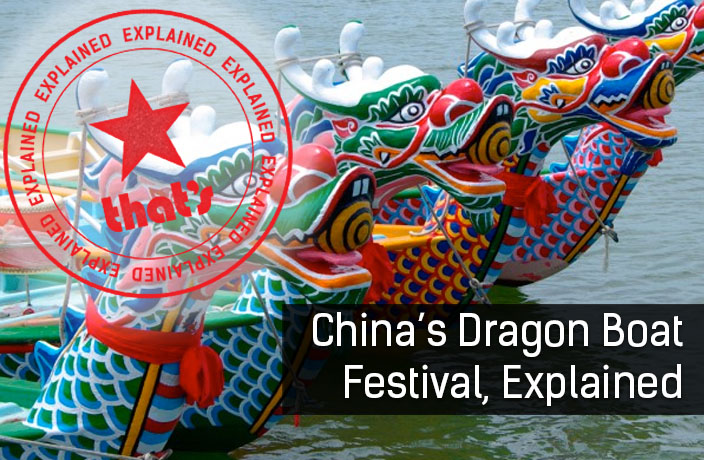 The Explainer is where we explain an aspect of Chinese life. Simple. So now you know.
The Explainer is where we explain an aspect of Chinese life. Simple. So now you know.
Dragon Boat Festival, aka ‘Duanwujie’ (端午节), is a traditional Chinese holiday that commemorates the life and death of the famous scholar and poet Qu Yuan, who lived during the Warring States period of the Zhou Dynasty in around 300 BC. The festival falls on the fifth day of the fifth month on the Chinese lunar calendar every year. This year, it falls on June 7.
History of Dragon Boat Festival
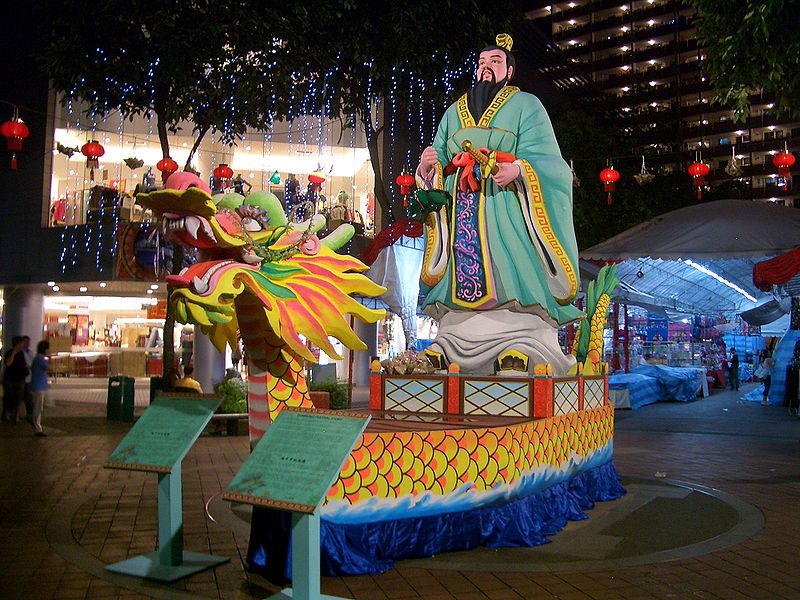 Image via
Image via
According to Chinese folklore, Qu contributed a lot to society, having served in high offices. However, he fell out of favor with the emperor, was accused of treason and eventually sent into exile. During his time in exile, Qu wrote a lot of poetry. Unappreciated and unhappy, he drowned himself in the Miluo river on May 5 of the lunar calendar in 278 BC after the Qin state captured the Chu capital of Ying.
According to legend, the local villagers highly admired Qu. In an attempt to save him, or at least find his body, they raced out onto the river in boats – which is said to be the origin of dragon boat races.
Dragon Boat Races
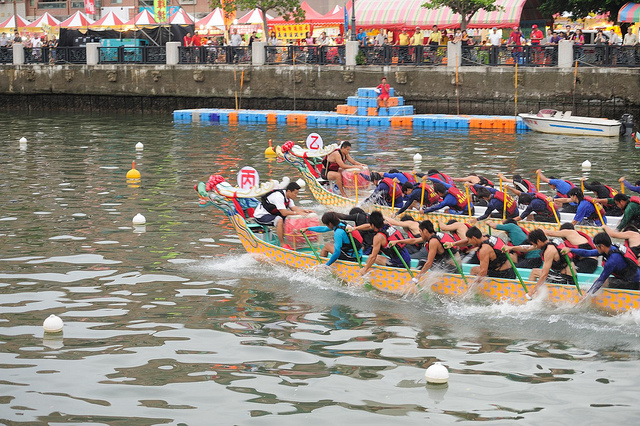 Image via /Flickr
Image via /Flickr
As the name indicates, the centerpiece of Dragon Boat Festival is the dragon boat race (赛龙舟, ‘sai long zhou’). In many cities across China, dragon boat races are organized to mark the day.
READ MORE: Making and Racing Dragon Boats in the PRD
Zongzi: A Classic Holiday Treat
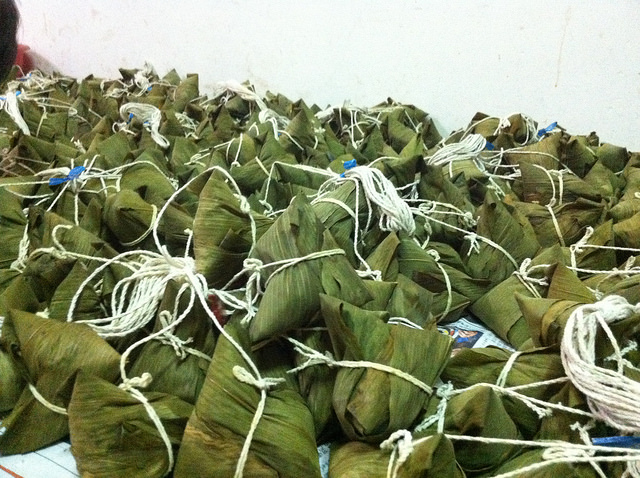 Image via lrs1108/Flickr
Image via lrs1108/Flickr
Legend has it that packets of rice were thrown into the river to prevent the fish from eating Qu’s body. Gradually, people took to eating ‘zongzi’ (粽子), glutinous rice with different fillings wrapped in bamboo leaves, around this time each year. Popular fillings include yolk and meat in Shanghai, red beans and jujubes.
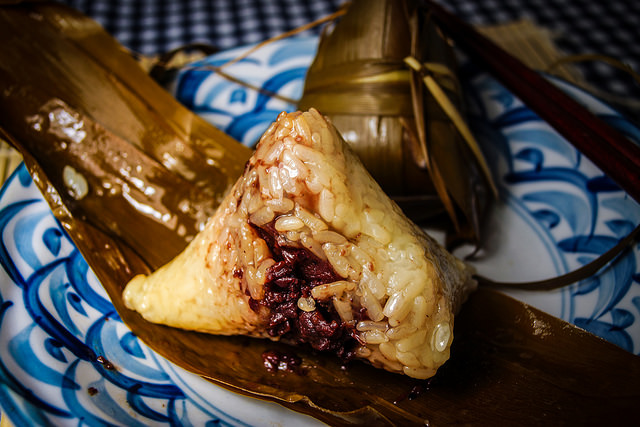 Image via /Flickr
Image via /Flickr
A Time to Fend off Diseases
 Image via /Flickr
Image via /Flickr
According to Chinese tradition, people can easily come down with illness around Dragon Boat Festival, a warm season when bacteria and insects are most active. Because of this, many measures are taken to keep diseases at bay. Families often hang Ay Tsao, a wormwood-like herb with a potent odor, on their door. Some also drink wine as a tonic. Scented sachets stuffed with fragrant medicinal herbs are also popular.
 Image via /Flickr
Image via /Flickr
[Cover image via Mainland Tour]
This post originally appeared on Thatsmags.com in June 2016. It has been updated and republished on June 6, 2019.
For more of The Explainer, click here.
www.thatsmags.com

Dragon Boat Festival, aka ‘Duanwujie’ (端午节), is a traditional Chinese holiday that commemorates the life and death of the famous scholar and poet Qu Yuan, who lived during the Warring States period of the Zhou Dynasty in around 300 BC. The festival falls on the fifth day of the fifth month on the Chinese lunar calendar every year. This year, it falls on June 7.
History of Dragon Boat Festival

According to Chinese folklore, Qu contributed a lot to society, having served in high offices. However, he fell out of favor with the emperor, was accused of treason and eventually sent into exile. During his time in exile, Qu wrote a lot of poetry. Unappreciated and unhappy, he drowned himself in the Miluo river on May 5 of the lunar calendar in 278 BC after the Qin state captured the Chu capital of Ying.
According to legend, the local villagers highly admired Qu. In an attempt to save him, or at least find his body, they raced out onto the river in boats – which is said to be the origin of dragon boat races.
Dragon Boat Races

As the name indicates, the centerpiece of Dragon Boat Festival is the dragon boat race (赛龙舟, ‘sai long zhou’). In many cities across China, dragon boat races are organized to mark the day.
READ MORE: Making and Racing Dragon Boats in the PRD
Zongzi: A Classic Holiday Treat

Legend has it that packets of rice were thrown into the river to prevent the fish from eating Qu’s body. Gradually, people took to eating ‘zongzi’ (粽子), glutinous rice with different fillings wrapped in bamboo leaves, around this time each year. Popular fillings include yolk and meat in Shanghai, red beans and jujubes.

A Time to Fend off Diseases

According to Chinese tradition, people can easily come down with illness around Dragon Boat Festival, a warm season when bacteria and insects are most active. Because of this, many measures are taken to keep diseases at bay. Families often hang Ay Tsao, a wormwood-like herb with a potent odor, on their door. Some also drink wine as a tonic. Scented sachets stuffed with fragrant medicinal herbs are also popular.

[Cover image via Mainland Tour]
This post originally appeared on Thatsmags.com in June 2016. It has been updated and republished on June 6, 2019.
For more of The Explainer, click here.



